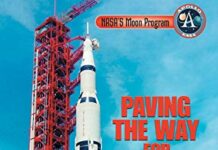
Ebook Info
- Published: 2005
- Number of pages: 258 pages
- Format: PDF
- File Size: 54.40 MB
- Authors: David M. Harland
Description
Provides a comprehensive account of the recent ‘Spirit’ and ‘Opportunity’ Mars Exploration Rover missions. Relates how NASA/ESA have sought evidence of life on Mars, with the prevailing mood sometimes being optimistic and sometimes pessimistic. Details an account of the rationale for the tests for life carried out by the Viking missions in 1976, with an account of the debate over their results. A concise primer for readers wishing to ‘bone up’ when NASA next sends a lander explicitly to seek life on Mars. Discusses the nature of life on Mars in terms of the most primitive forms of life on Earth, and reviews the implications of there being life on both planets.
User’s Reviews
Editorial Reviews: Review From the reviews:”David Harland’s book is well times, as he succinctly sums up the history of Mars exploration, linking together the early telescopic observational stuff with the modern, represented by the wildly successful Sprit and Opportunity rovers…There’s also a highly informative section on the chemical basis of life, in which we learn about the extremophiles that live next to hot thermal vents on the Earth’s sea bed… Approximately 230 well-labelled and informative pictures and dozens of diagrams alone make the book good value, and one feels again some of the excitement when reading over the last 60 pages about the landings and explorations of the US Spirit and opportunity… His fine interpretations of how it all hangs together to paint a picture of an ancient Martian history in which large standing bodies of water almost certainly exited on the planet makes a book that anyone interested in Mars should have.” Steve Tidey (Astronomy Now)”This is a typical David Harland book – lots to praise … . Narrowly focussed, it covers man’s progress in understanding the nature of the red planet, Mars, and whether it has, or once had, liquid water and perhaps life. It is written in an easy style and flows nicely in spite of the comprehensive detail. … The book is well illustrated with monochrome drawings and sketches, especially of spacecraft.” (Roger Feasey, AAS Journal, September, 2006)”The book is organized as an historical review of observations and theories about Mars from telescopic observation, followed by a chronological description of Mars exploration from space probes. The historical section is full of fascinating information, with many stories … that give a detailed background as to the state of knowledge of Mars up to the start of the space race and how it was obtained. … there is a wealth of detail and many interesting anecdotes.” (The Observatory, Vol. 126 (1195), December, 2006)”The prolific Mr Harland has come up with a real winner in this slim but highly readable volume. … The book is profusely illustrated with maps and photos from the various missions, and there is even a very nice selection of colour plates, particularly of the spectacular views from the rovers. This really is a very fine book, and anyone interested in Mars exploration would get much out of it.” (Liftoff, Issue 233, May/June, 2006) From the Back Cover “Why explore Mars? The simple answer is, we’re going to Mars to search for life. We’re following the water because on Earth where you find liquid water, organic material, and energy, you find life.” u find life”Ed Weiler, NASA’s Associate Administrator for Space ScienceEar where you find liquid water, A century ago, the world was enthralled by Percival Lowell’s vision of a Mars criss-crossed with the canals of a dying civilization distributing water from the polar caps. Later, Mars was thought to have been cold, dead and dry for eons, but striking new evidence suggests the planet was relatively warm and wet in geologically recent times, and that even now there are reserves of water frozen beneath the planet’s surface. Today, robot spacecraft maneuver across the Martian surface while others orbit overhead seeking evidence of water, ice, and landing sites for further exploration. In recent years, the very possibilities for life have dramatically expanded as discoveries by biologists and oceanographers have revealed bizarre life forms where none would have been expected. And as the growing evidence that water flowed on Mars becomes indisputable, more spacecraft are soon to follow.This highly absorbing book relates how NASA and ESA have sought evidence of life on Mars. ‘Follow the water’ with noted science writer David Harland as he assembles and weighs the evidence in this timely and compelling book. It contains what you need to know behind today’s, and possibly tomorrow’s, headlines, including details of the Mariner, Viking, and Pathfinder missions and evolving theories of Martian geology and climate. It explains how the search accelerates with the Mars Orbiter and Mars Exploration Rovers Spirit and Opportunity. Harland sets this within the broader perspective of the likely nature of life on Mars as compared to primitive life on Earth. Finally, he analyzes the implications of there being life on both planets. Join the scientific adventure of a lifetime in this well-researched and thoroughly engrossing true account.
Reviews from Amazon users which were colected at the time this book was published on the website:
⭐The author clearly has a problem of not being able to focus on the big picture. With a name like “Water and the search for life on mars,” one would expect the main theme of the book to specifically be about the characteristics of Mars that point to the possibility of life. However, this is not the case. Harland consistently gets stuck in mundane details such as how NASA actually lands its probes, the different stages of a specific landing, and what are the different gadgets on each probe and lander. Furthermore, he goes on for about 30 pages trying to lecture the reader about the biology of DNA, proteins, and amino acids. He simply tries to cover too many topics at once and this leaves the reader exhausted, confused, and frustrated.I picked up this book because I was intrigued about why scientists actually believe there might have been life on Mars in the past or if there currently is life on the planet. Instead I found myself reading uninteresting details about how a crater is formed and why there are mechanical failures on NASA probes. Harland spends a significant amount of time discussing how NASA conducts their missions instead of actually focusing on the much more interesting topic of life on other planets.Overall, I do not recommend this book for anyone that is specifically interested about the possibility of life on Mars. You will lose yourself in the technical details and get frustrated by the book’s lack of focus.
⭐I bought the book because of its title, “Water and the search for life on mars”. However I was disappointed in that it had exceedingly little to say about that topic. Instead, it gave a huge amount of detail on the day by day operations of the Rovers which fortunately was almost as valuable to me. The book is well written, gives interesting and valuable details on the MER operations and is a good reference on the inside details of the pre-victoria phase of the MER mission. However, it disappoints if the reader was only interested in the aspects of the mission related to current water and life, arguably the most important aspects of the MER and the Curiosity missions.
⭐David Harland has done an excellent job summarizing the results of international efforts to explore Mars with telescopes and, now, robotic spacecraft. Our understanding has increased dramatically in recent years thanks to high-resolution mapping from orbiting spacecraft and, primarily, to the astonishing discoveries of the Mars Exploration Rovers: Spirit and Opportunity. I found some of the geological discussion in the middle part of the book a bit challenging, but well worth the effort because I think I now have at least a passing appreciation for overall context of the Rover missions. The preliminaries occupy the first 130 pages of Harland’s book and the real meat is in the 90 pages or so that follow, detailing the traverses and results of Spirit and Opportunity during their first 350 or so martian days on the planet. The evidence for wet periods in the history of Mars is clearly presented and of great value to a non-expert like me. My only reservation is that more attention could have been paid to cross-referencing and labeling of the maps. Highly recommended.
⭐When i first approached this item i was much intrigued by its bewildering and (seemed) a revealing book, hence forth i was obliged to buy it to alter my opinions on the ‘subject’ of life/mars. However it turns out to be a book on the just the mere equipment they use to find out what where water is and hundreds of essays written to explain and express the history of telescopes and many other off subject about astronomie’s oldest findings.This book is not an exact and presice fact compressed book on water on mars, it is a very general book on the historical phisics of astronomy.
Keywords
Free Download Water and the Search for Life on Mars (Springer Praxis Books) 2005th Edition in PDF format
Water and the Search for Life on Mars (Springer Praxis Books) 2005th Edition PDF Free Download
Download Water and the Search for Life on Mars (Springer Praxis Books) 2005th Edition 2005 PDF Free
Water and the Search for Life on Mars (Springer Praxis Books) 2005th Edition 2005 PDF Free Download
Download Water and the Search for Life on Mars (Springer Praxis Books) 2005th Edition PDF
Free Download Ebook Water and the Search for Life on Mars (Springer Praxis Books) 2005th Edition





